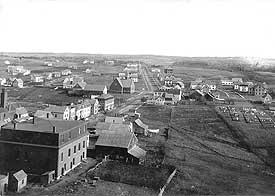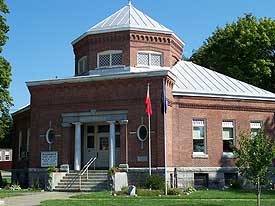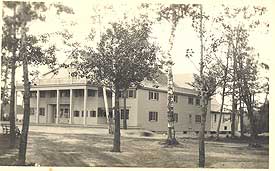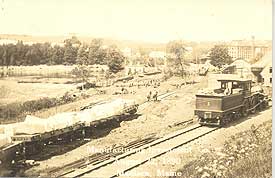
How It All Began
 Madison 1894
Madison 1894
 Madison July 4th 1903
Madison July 4th 1903
Originally known as Barnardstown after the principal landowner Moses Barnard, it is said by some that Madison was later named for James Madison, who became President of the United States five years later. The town has also been referred to as Madison Bridge and Norridgewock Falls according to the accounts of Emma Folsom Clark, Madison's early historian.
Madison Public Library

Madison Public Library is one of many libraries across the country built with funds from the Andrew Carnegie Foundation around the turn of the 20th century. Dedicated on January 2, 1907, Madison Public Library was listed on the National Register of Historic Places on January 5, 1989.
Lakewood Theater
 An important part of the community from the mid-1920s onward was the Lakewood Players theater group which provided "plays which bear the stamp of Broadway approval". Set in Lakewood on the shore of Lake Wesserunsett, the theater still offers performances each summer.
An important part of the community from the mid-1920s onward was the Lakewood Players theater group which provided "plays which bear the stamp of Broadway approval". Set in Lakewood on the shore of Lake Wesserunsett, the theater still offers performances each summer.
Madison's Manufacturing

In 1903, Madison was described as one of the state's leading towns in amount and importance of our manufactured goods.
The Railroad & Trolley

Everything came in by rail until WW II was over. When the freight came in, the first thing to be handled was the baggage car which handled the mail. The railroad also carried passengers as well as baggage and freight.
Bicentennial Quilts
The Somerset County Bicentennial Quilt and the Madison quilt square created by local resident Sharon Mantor. The quilt hangs at the County Courthouse in Skowhegan.
Father Rasle Monument

Old Point Monument is a landmark of interest to every student of the history of New England and is of special interest to citizens of Madison for, here, within her bounds, came the tragic end of the Norridgewock tribe of Abenaki Indians who had for generations roamed this region unmolested.
Historical Societies
The Town of Madison hosts two historical societies. The Madison Historical and Genealogical Society meets each Saturday at 10am and has items on display at the Old Point School building on Old Point Avenue. They have an abundance of old photos, tools, clothing and other artifacts. For more information you can visit their facebook page.

